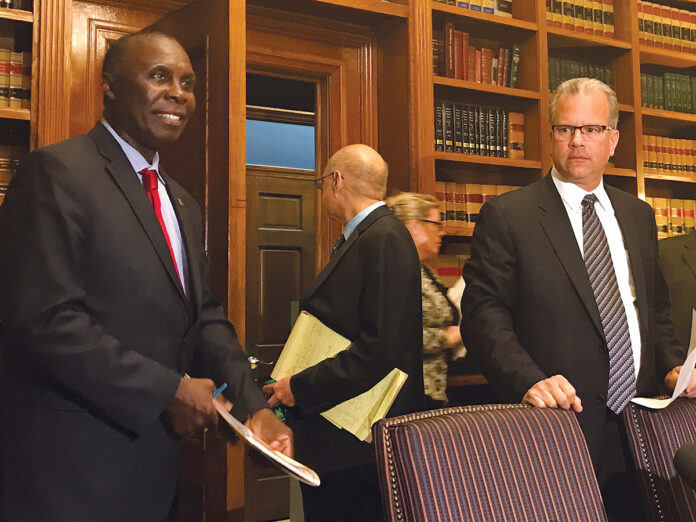
PROVIDENCE – The R.I. House has approved a bill that would broaden the state’s motion picture tax credit program, in an effort to attract larger films and documentary productions.
The proposal would allow the productions to use state tax credits even if most of the work isn’t done within the state, as long as at least $10 million in work happened within Rhode Island, according to a summary. The tax credit can cover up to 30% of certified production costs.
The proposal is sought by Rep. Marvin L. Abney, D-Newport, chairman of the House Finance Committee. It now moves to the state Senate for review.
The cap on the credit would remain the same, at a total of $20 million. The maximum for each production would also remain the same, at $7 million, although the figure can be waived by the state’s tax administrator if funds remain.
The motion picture tax credit has a spotted fiscal history in Rhode Island.
In recent years, few of the film productions have complied with state requirements to share data, according to an analysis in 2018 by the R.I. Department of Revenue’s Office of Revenue Analysis.
If approved, the program changes would mean that films would no longer have to shoot a majority of their production in Rhode Island, a requirement that had prompted major projects to not consider the state, Abney said in a news release.
“This is a very appropriate and exciting amendment to our motion picture tax credit program,” Abney said. “With this change, Rhode Island and its numerous natural and man-made assets, such as the Newport mansions, will now have a shot at landing much larger and high-profile movie and television productions.”
In the last fiscal year, three productions received a total of $3.2 million in state tax credits through the program, according to R.I. Department of Revenue reports. None of those recipients submitted jobs data, as required by state law. Estimated jobs, provided by a state office, indicated 336 positions were associated with the productions.
The Office of Revenue Analysis report found Rhode Island had lost money on the credits, given the relatively few jobs and low wages associated with the industry here.
The analysis reviewed credits awarded and revenues generated from 2013 through 2015. During that span, the state had 14 productions that received $7.6 million in state tax credits, and which had $30.5 million in certified expenses.
An evaluation of revenue impact found the films produced $691,458 in state revenue through sales and use taxes and personal income taxes, as well as other sources. That was offset by $2.5 million in foregone revenue, due to the credit. A total of 27 cents in new revenue was generated for every dollar of credit awarded, the office found.
The report stated: “This payback ratio shows that new revenues generated from [the motion picture tax credit-incentivized] activity may help to mitigate the costs of the [credit], but it is not sufficient for the tax credit to ‘pay for itself.’ ”
Mary MacDonald is a staff writer for the PBN. Contact her at MacDonald@PBN.com.












